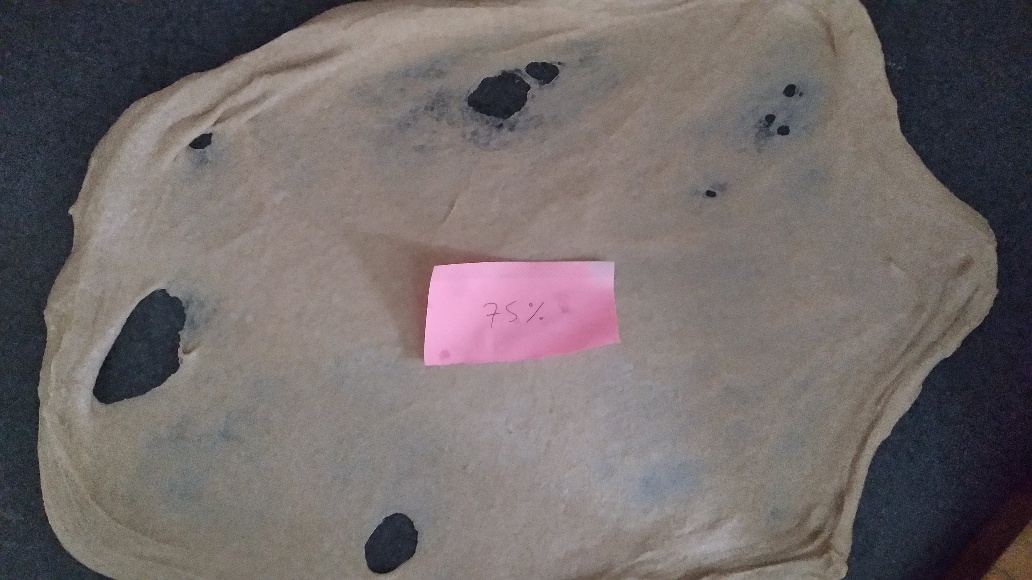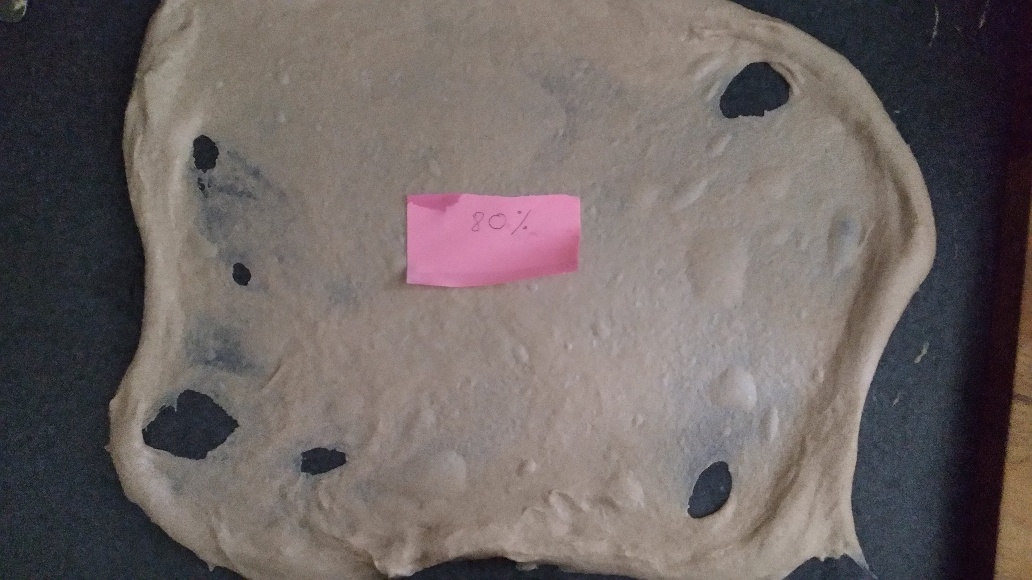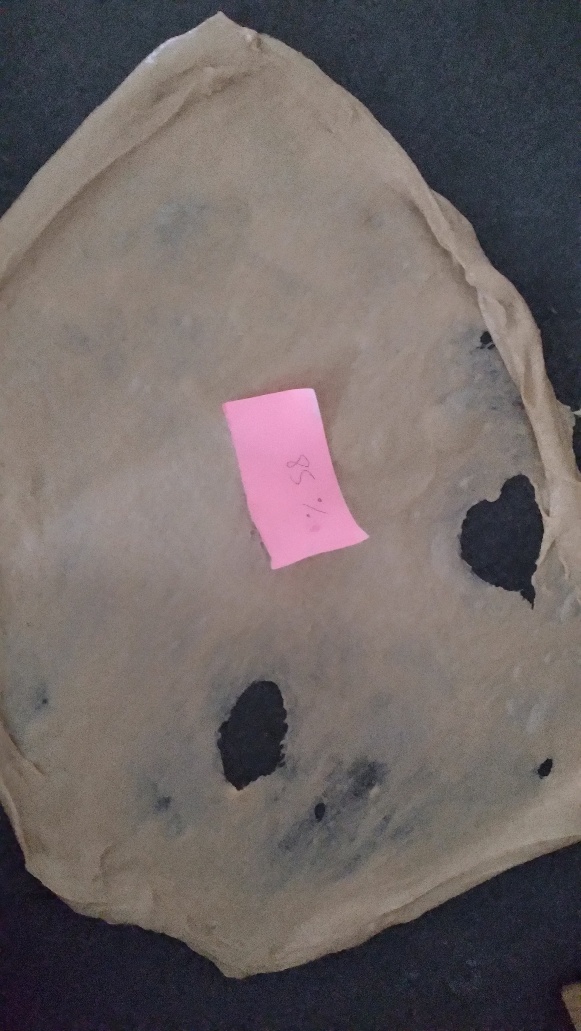
Flour stress test question
After not having been able to achieve a windowpane test lately after 2 or even 3h autolyze, I decided to do a flour stress test today to see how my bread flour would react depending on the hydration level
Here is the flour I used for the test and for my recent bakes (that did all prove to be very challenging: no windowpane at the end of the autolyse nor any proper oven rise, very tight crumb etc....)
https://1847.ca/product-category/shop-bread-flour/
The protein content is 13,5% - I am not sure what kind of flour it is, to be honest, but it's clearly not white
Here's the description from the website: Perfected with professional sourdough bakers and blended for full bodied flavour and texture. Notes of cinnamon and fresh cut wheat fields will shine through in your baking. Made from a blend of hard red spring wheat to deliver exceptional protein content resulting in high gluten development and oven bounce. Best used in sourdough bread, pizza dough and naan
So here are the results: I checked after 2h and 3h, and still no windowpane (or very timid), whatever the hydration (70-75-80-85%). All of them were very sticky and very easily tearable (if it's a word)




So does anybody have any idea what's happening here? Is it due to the flour?? It seems to be a very different kind of flour than a regular white bread flour, and I don't know what to do of that....Which is a shame, as I have 20kg of it!!! :-))))


I would give it more time and then stretch. It's a very strong flour milled form hard wheat, that is why it tears.
It has to either be kneaded mercilessly in food processor or in mixer, or let autolyze overnight in a relatively cool place at 20C or somewhat lower.
Ah! that was my first idea. Now that I looked into their website explanations, they tell us that it needs to be fortified with gluten, due to it being freshly milled and without flour improvers.
So it tears and is sticky because it is not oxidized enough yet. Your 20lbs will oxidize slowly with time and in about 12 weeks the flour would be ready for baking with it.
Meanwhile you can still use it either in pure form for other baking: cookies, muffins, soda breads, etc. or in 50:50 blend with store-bought RobinHood Best for Bread flour for bread baking.
It says so here:
https://1847.ca/recipes/bread-machine/
"Vital Wheat Gluten is used to add extra elasticity and rise to the loaf. Since 1847 flours are freshly milled and not chemically bleached there is a lower gluten content.
If the bread flour has been left out for several months the natural bleaching process will occur and the vital wheat gluten is not needed. This is how bread flour used to be made, with a 12 week rest allowing natural oxidation to occur to aid in gluten formation."
I had absolutely no idea!!! Thank you so much for this Mariana, now I understand my recent struggles with this flour!!!!
I keep it in the freezer, so do you think it's going to be oxidized as well as if if was kept at room temp?
And so what about the autolyse: do you still think it would still be useful?
Gail, it's a good experience to have. We all learn like that. I had met such flour once as well from another mill in Ontario, it was even darker than yours, even though it had normal ash content of white bread flour, all because it was freshly milled and not processed normally.
Now that you witnessed the hallmark qualities of freshly milled bread flour: its stickiness, pastiness, easily becoming soupy in the process of fermentation with flowing and spreading in the oven loaves, low porosity, low bread volume, cracks on the surface, now you know.
Normally, more advanced industrial millers would blow warm air through the layer of freshly milled flour for 6 hours and mature flour just like that, naturally. At home all we can do is to keep it at 15-25C for 1.5-2 months sometime sifting it or at least stirring it, to achieve the same result. Whole grain freshly milled flour would mature quicker, in 3 weeks or so.
If you wish to store your flour for a long time, you can postpone flour maturation for up to one year by freezing it. Meaning freeze it, then take it out and let it aerate for several weeks to mature.
Autolysis per se will destroy whatever little gluten it has because autolysis means 'self-destruction', self-digestion of flour proteins by flour proteases.
What you can do to maximize the amount of natural gluten in this flour is to mix a rather stiff piece of dough and let it sit refrigerated for a while, for up to 3 hours, to let the gluten form without autolysis (i.e. without proteolysis). And then knead it, add enriching or gluten blocking ingredients (extra water, fat, milk, sugar, egg yolks etc.) and proceed with the recipe as written.
Oh whoa, I totally understand now why my dough/breads have been so...challenging lately, to say the least!!! thanks you again so much Mariana for this, it's so eye-opening!!! Well, I guess I'll have to get a more beginner-friendly bread flour then :-)
Actually I'm really looking forward to try a new flour to see what difference it's going to make...I find it more enjoyable to blame the flour rather than my beginner's baking skill for the repetitive and complete bread failures I've had recently :-))))